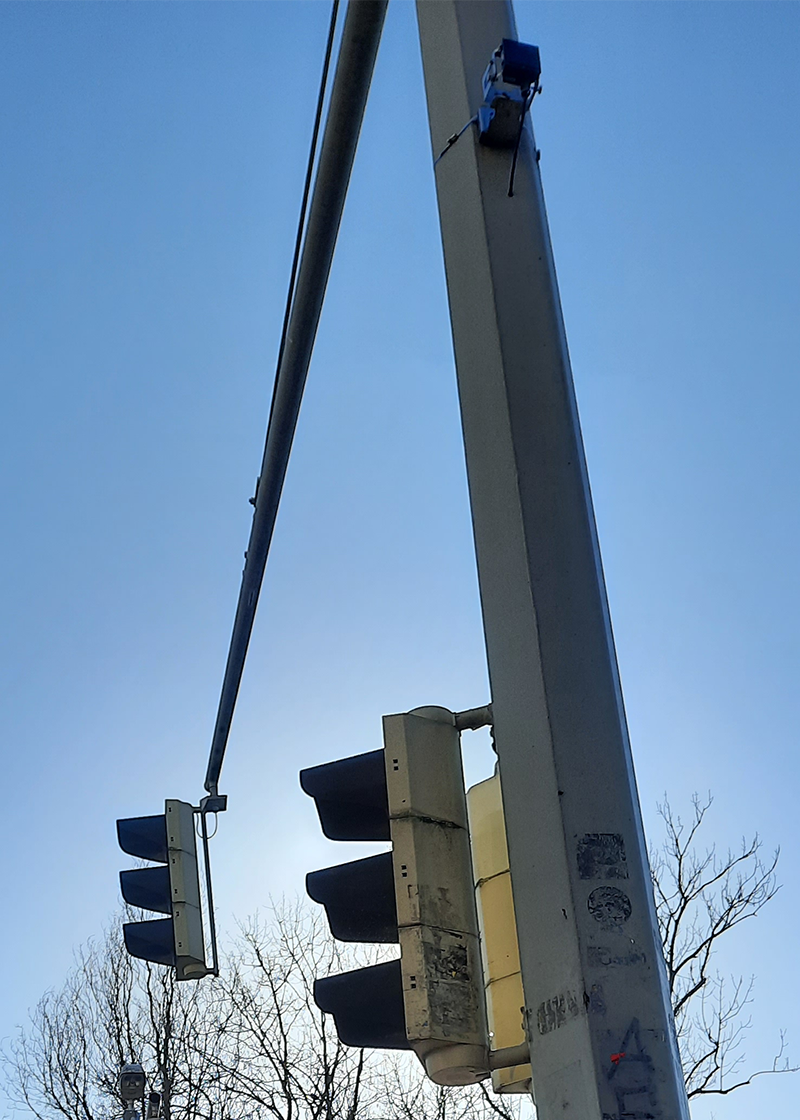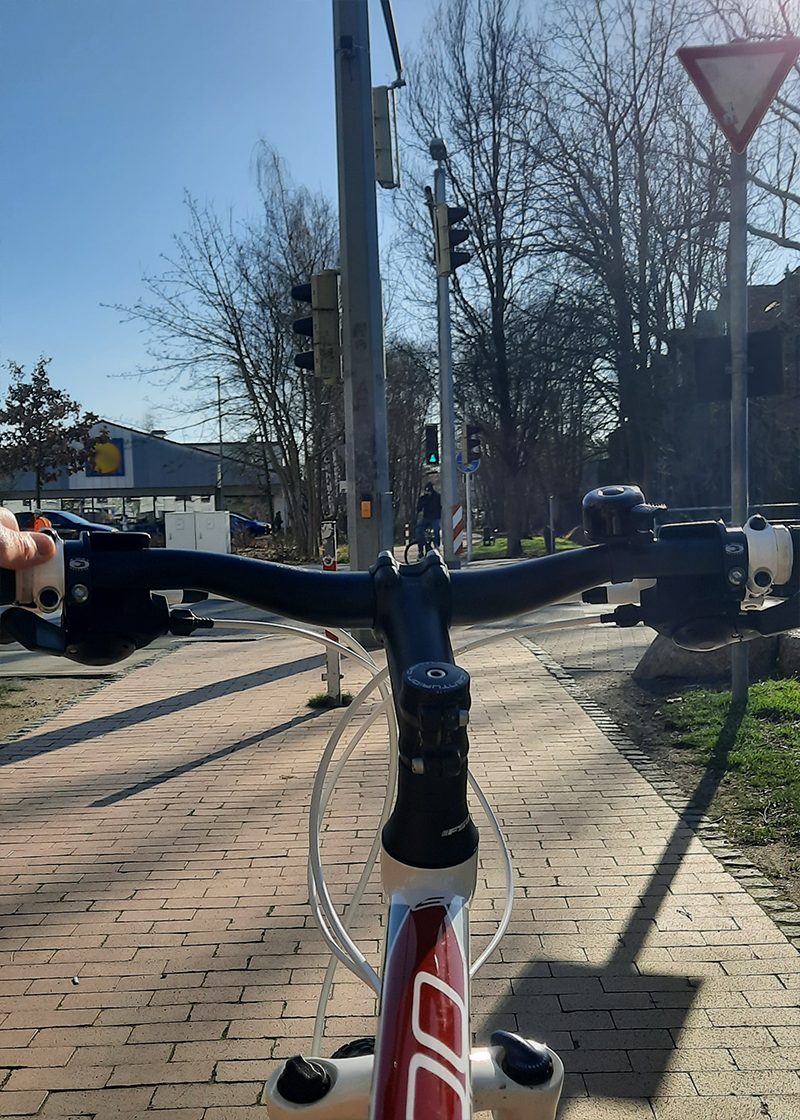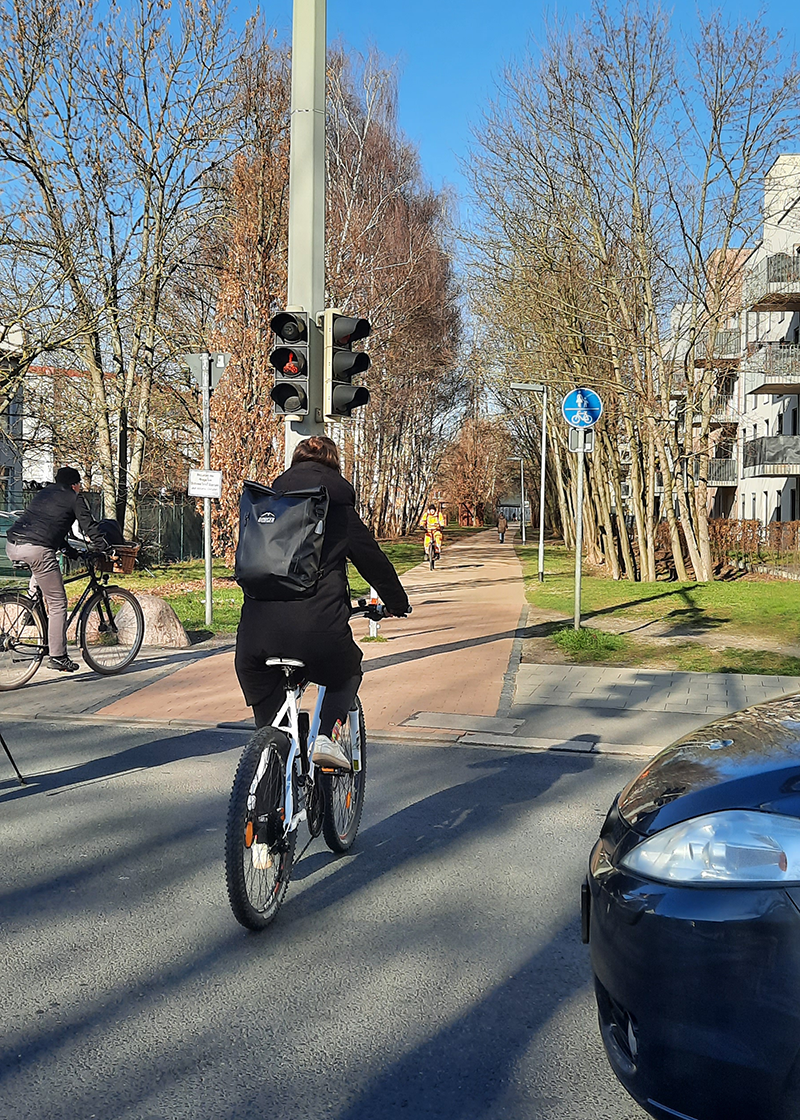Bicycle detection in Braunschweig
Translation of an article published in the Braunschweiger Zeitung on 12.02.2023. Read the original version here (click).
The author of the article is Jörn Stachura/Braunschweiger Zeitung
Braunschweig: How the new traffic lights at Ringgleis work
Radar technology from the Forschungsflughafen Braunschweig is to make cycling more comfortable and safer. The test phase has already begun.
Smart City Braunschweig - many believed that the good old bicycle could not benefit from new technologies, and that the e-bike has already marked the peak of the imaginable. But that is not true. High-tech traffic lights are now in place at two intersections at the Ringgleis. High technology from the Forschungsflughafen Braunschweig is supposed to make cycling more comfortable and safer than ever before.
A taste of the future: that is what we can now experience at the Ringgleis. The systems installed on Hildesheimer Straße and Celler Straße are from smartmicro It’s a company that proves the statement: Economic development pays off. smartmicro originated from the Technical University of Braunschweig, firstly operating at the Technologiepark Rebenring, now based at the Forschungsflughafen Braunschweig with around 200 employees involved in the development and production of high technology. They are experts in radar technology, which is currently making its way to the Ringgleis.
"We have been in contact with the city administration and the service provider Bellis for two years; there have been delays because of Corona. It made the perfect sense to make the radar technology beneficial for the cyclist at the Ringgleis as well” says the Chief Sales Officer, Daniel Reitenauer. smartmicro radar technology is built-in in millions of vehicles worldwide as a distance radar. The company also develops and sells traffic management technology such as solutions for traffic light control systems. "We've already sold about 150,000 systems world-wide. But comparatively few in Germany."
The Ringgleis area was a great fit, explained Reitenauer, "because there's a little hype nationwide right now to promote cycling. Many German municipalities are looking for solutions to enhance the safety of Vulnerable Road Users. We already use a traffic light in this area for research, so it was obvious also to equip the Ringgleis intersection with radar technology. It is, so to say, an additional reference installation." An installation, that is free of charge for the city of Braunschweig.
As described by Retinauer, every user can experience the advantages: "Whether it is nighttime, rain or fog – the radar always works. No underground works are necessary since there is no need to lay the induction loops either." Detecting the cyclists is, of course, no challenge for the radar: "It could monitor four simultaneously." – states Retinauer. Performing speed-measuring, [object] counting, all depends on software settings. "Not only cars or cyclists can be detected, but also pedestrians."
As for the goal, Reitenauer describes, "The push button at traffic lights should be no longer needed. But it is about more than green waves: It is about safety." He gives the following as a possible scenario: "At traffic lights, turning motorists get a warning signal when the radar sensor detects a cyclist approaching from behind." Thus, accidents occurring while taking turns could be avoided.
That is still an objective for the future. The application is in the test phase at the Ringgleis intersection. Currently, the push buttons and radar sensors are still parallelly connected. The first of three imperceptible radar measurement zones are set up at a distance of around 100 meters. The system identifies approaching objects on the Ringgleis primarily based on their speed. Cyclists, but also ambitious joggers, are detected, according to the press office of the city administration.
These are then "tracked" over three virtual loops and trigger the request in the traffic light's control unit. The significant advantage: "Cyclists no longer have to drive up to the button to request the green signal." The press office emphasizes - "The detectors do not record any images!"
The waiting times for the green light for pedestrians and cyclists have not changed due to the test. Only the time of the green light request was "brought forward". Hildesheimer Straße is a busy main road; the green phases of the Ringgleis intersection therefore correspond to the switching phases of the neighboring traffic lights at Rudolfplatz and Schölkestraße.
For Ringgleis users, this means that during rush hours, i.e., Monday to Friday, in the morning between 6 am and 8:30 am; and in the afternoon between 4 pm and 8 pm, the waiting time for crossing the Ringgleis is a maximum of 77 seconds.
Outside these times, the period it is more than halved - to a maximum of 35 seconds. The average waiting time is shorter in each case. The traffic lights operate daily from 6 am to 10 pm. According to the press office, "The data is being evaluated the system occasionally checked on site, and certain parameters are readjusted when needed: such as the speed value for the best possible recognition of cyclists. It is still too early for final results."
But: if the system works reliably in the long term, "regular operation at the Ringgleis or other locations can be considered."



